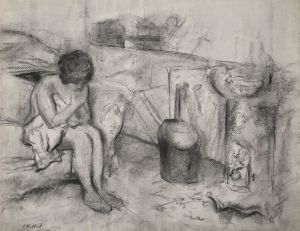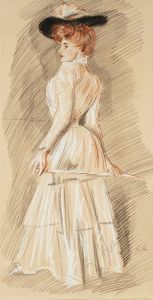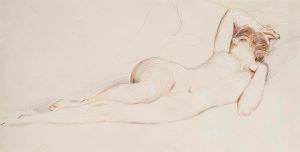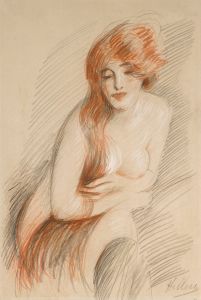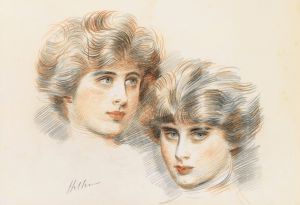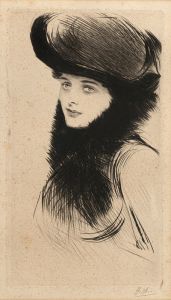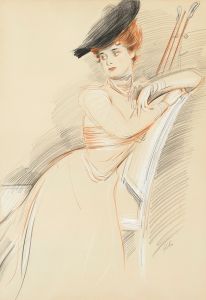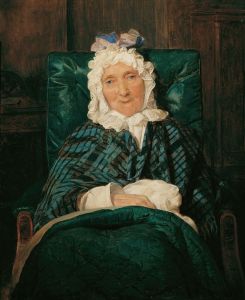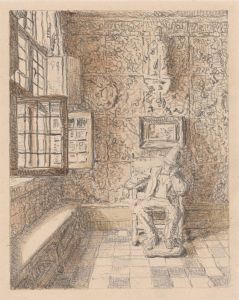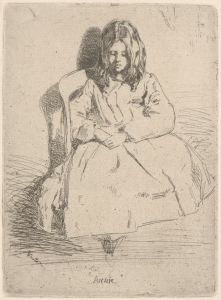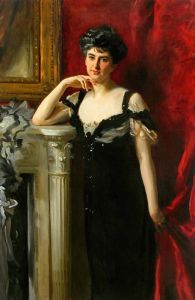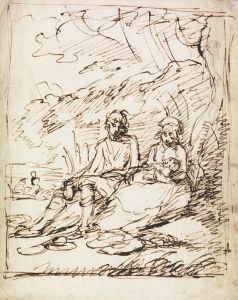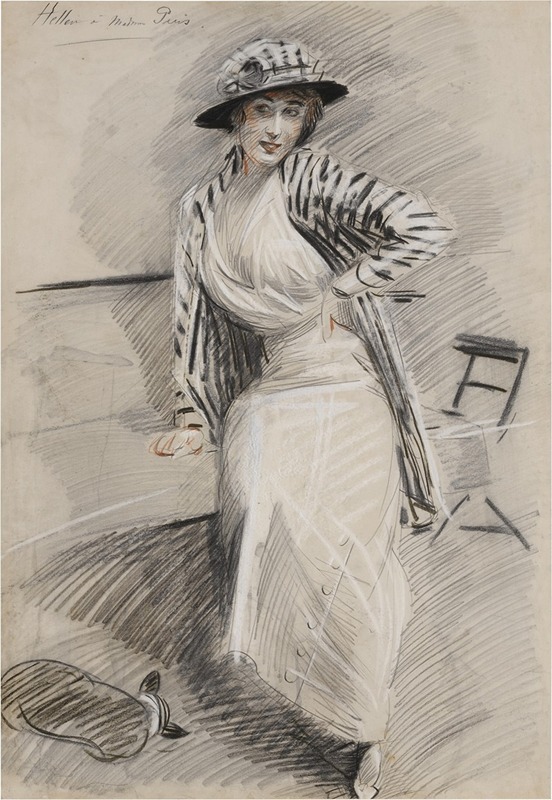
Madame Paris assise sur une banquette
A hand-painted replica of Paul César Helleu’s masterpiece Madame Paris assise sur une banquette, meticulously crafted by professional artists to capture the true essence of the original. Each piece is created with museum-quality canvas and rare mineral pigments, carefully painted by experienced artists with delicate brushstrokes and rich, layered colors to perfectly recreate the texture of the original artwork. Unlike machine-printed reproductions, this hand-painted version brings the painting to life, infused with the artist’s emotions and skill in every stroke. Whether for personal collection or home decoration, it instantly elevates the artistic atmosphere of any space.
Paul César Helleu was a French artist known for his portraits of beautiful society women, capturing the elegance and grace of the Belle Époque era. One of his notable works is "Madame Paris assise sur une banquette," which exemplifies his skill in portraying the refined and fashionable women of his time.
Helleu was born on December 17, 1859, in Vannes, France. He studied at the École des Beaux-Arts in Paris, where he was a pupil of Jean-Léon Gérôme. Helleu's career took off in the late 19th century, and he became well-known for his drypoint etchings and paintings. His work was characterized by a light, delicate touch and an ability to capture the fleeting expressions and subtle nuances of his subjects.
"Madame Paris assise sur une banquette" is a testament to Helleu's mastery of portraiture. The painting depicts a woman, presumably named Madame Paris, seated gracefully on a bench. The composition is elegant and simple, focusing on the subject's poise and the luxurious details of her attire. Helleu's use of line and color highlights the textures of the fabric and the softness of the woman's features, creating a sense of intimacy and immediacy.
Helleu's portraits often featured women from high society, and his work was highly sought after by the fashionable elite of Paris and beyond. He was friends with many prominent figures of his time, including Marcel Proust, who admired his work. Helleu's ability to capture the essence of his subjects made him a favorite among the aristocracy and the burgeoning bourgeoisie.
The Belle Époque, a period of peace and prosperity in Europe that lasted from the late 19th century until World War I, was a time of great cultural and artistic flourishing. Helleu's work is emblematic of this era, reflecting the opulence and sophistication of the time. His portraits are not just depictions of individuals but also convey the spirit of an age characterized by elegance and refinement.
Helleu's technique often involved the use of drypoint, a printmaking process that allowed him to create fine lines and delicate details. This method was particularly suited to his style, enabling him to capture the subtleties of his subjects' expressions and the intricacies of their clothing. "Madame Paris assise sur une banquette" likely showcases these technical skills, although specific details about the medium used for this particular work are not widely documented.
Throughout his career, Helleu exhibited his work in various prestigious venues, including the Salon des Indépendants and the Société Nationale des Beaux-Arts. His art was celebrated not only in France but also internationally, with exhibitions in London and New York. Today, his works are held in numerous public and private collections, appreciated for their beauty and historical significance.
Paul César Helleu passed away on March 23, 1927, in Paris, leaving behind a legacy of exquisite portraits that continue to captivate audiences. "Madame Paris assise sur une banquette" remains a fine example of his ability to blend technical skill with an intuitive understanding of his subjects, capturing the grace and elegance of a bygone era.





